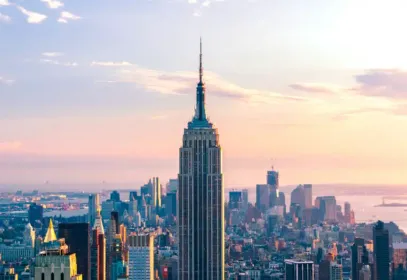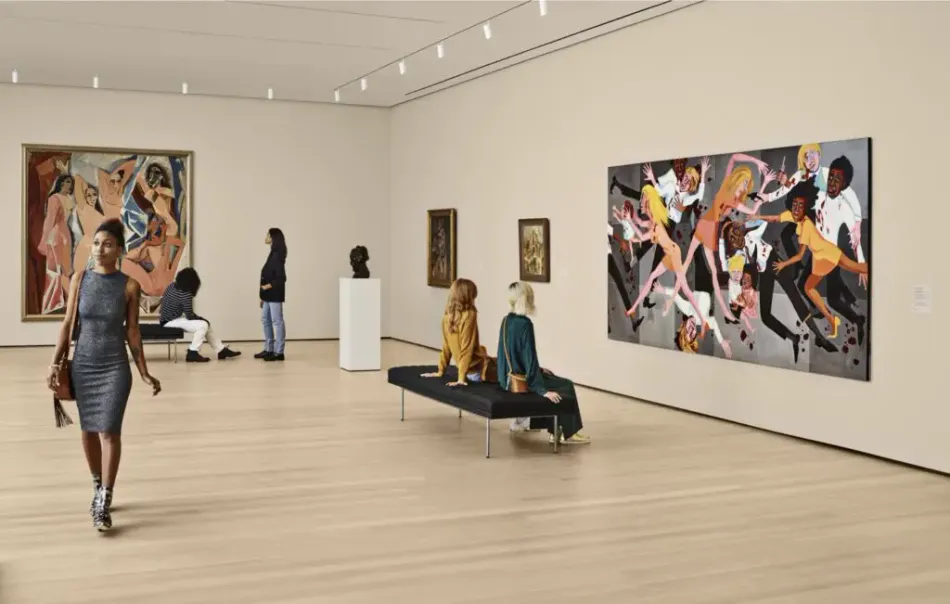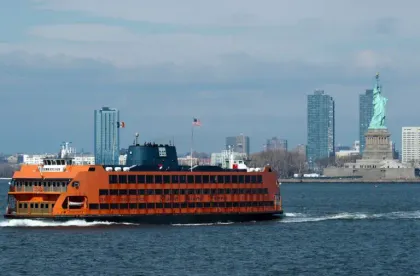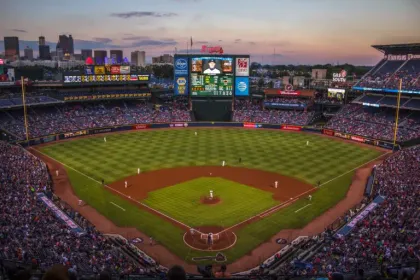 1 mile
1 mile
Visitor’s Guide to the Museum of Modern Art (MoMA)

Welcome to the Museum of Modern Art (MoMA) in New York City, an iconic venue that stands as a beacon of modern and contemporary art. Nestled in the heart of Manhattan, MoMA is not just a museum; it’s an immersive experience that invites visitors to explore the world of art through a new lens. From its inception in 1929, MoMA has been dedicated to being the foremost museum of modern art in the world. As you step into its dynamic space, you’re greeted by an array of artworks that span from the late 19th century to the present day.
MoMA’s collection offers a panoramic overview of modern and contemporary art, including works of architecture and design, drawing, painting, sculpture, photography, prints, illustrated books and artist’s books, film, and electronic media. The museum’s curatorial departments ensure a diverse representation of mediums, providing something for every visitor. Among its many treasures are Vincent van Gogh’s ‘The Starry Night,’ Salvador Dalí’s ‘The Persistence of Memory,’ and Claude Monet’s ‘Water Lilies’ series—just to name a few.
What makes Vincent van Gogh's 'The Starry Night' so significant at MoMA?
The museum also prides itself on its rotating exhibitions which showcase both established and emerging artists. These exhibitions are thoughtfully curated around themes that challenge and engage audiences. Whether you’re an art aficionado or new to the world of modern art, MoMA offers educational programs and guided tours that enhance your visit. The audio guides available provide insightful commentary on artworks and are available in multiple languages.
MoMA is not only about viewing art; it’s about experiencing it. The museum hosts various events throughout the year including film screenings at its own theater, artist talks, workshops for children and adults alike, and special member nights. These events offer unique opportunities to dive deeper into the artistic process and connect with the community.
When planning your visit to MoMA, consider stopping by The Museum Store where you can find reproductions of famous works, exclusive designs inspired by the museum’s collection, books on modern art, as well as unique gifts. For dining options within MoMA, there are several choices ranging from casual cafes to The Modern—a fine dining restaurant overlooking MoMA’s Abby Aldrich Rockefeller Sculpture Garden.
To make the most out of your visit:
- Check out MoMA’s website beforehand for information on current exhibitions and events.
- Purchase tickets online to avoid long lines.
- Download MoMA’s free app for an interactive map and audio guide.
- Consider becoming a member for unlimited free admission among other benefits.
In conclusion,
Keypoints
- Vincent van Gogh’s ‘The Starry Night’
- Salvador Dalí’s ‘The Persistence of Memory’
- Claude Monet’s ‘Water Lilies’
- Diverse collection spanning various mediums
- Rotating exhibitions showcasing contemporary artists
- Educational programs & guided tours
- Film screenings & artist talks
Check out things to do nearby...
 1 mile
1 mile
 5 miles
5 miles
Visitor’s Guide to the Staten Island Ferry
 5 miles
5 miles